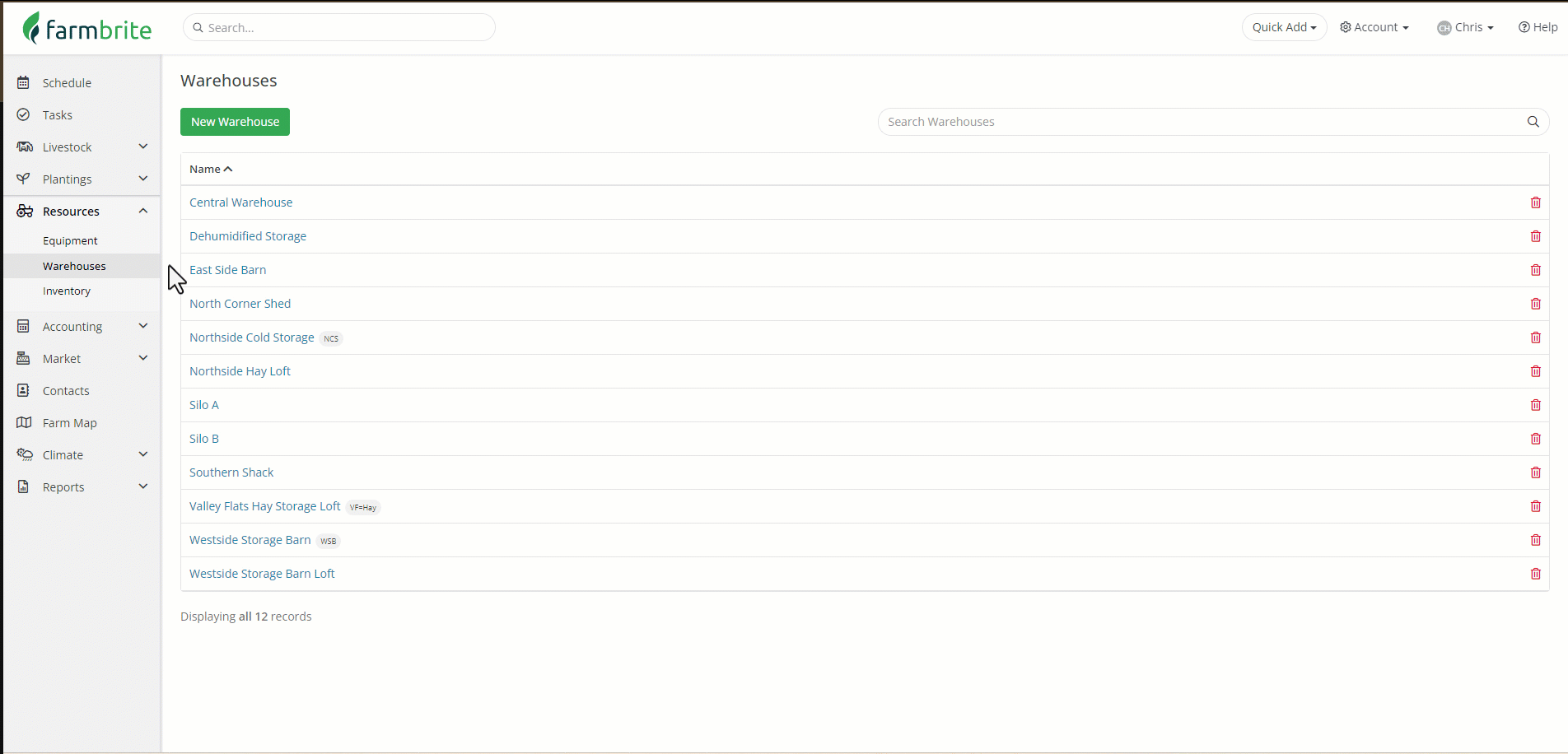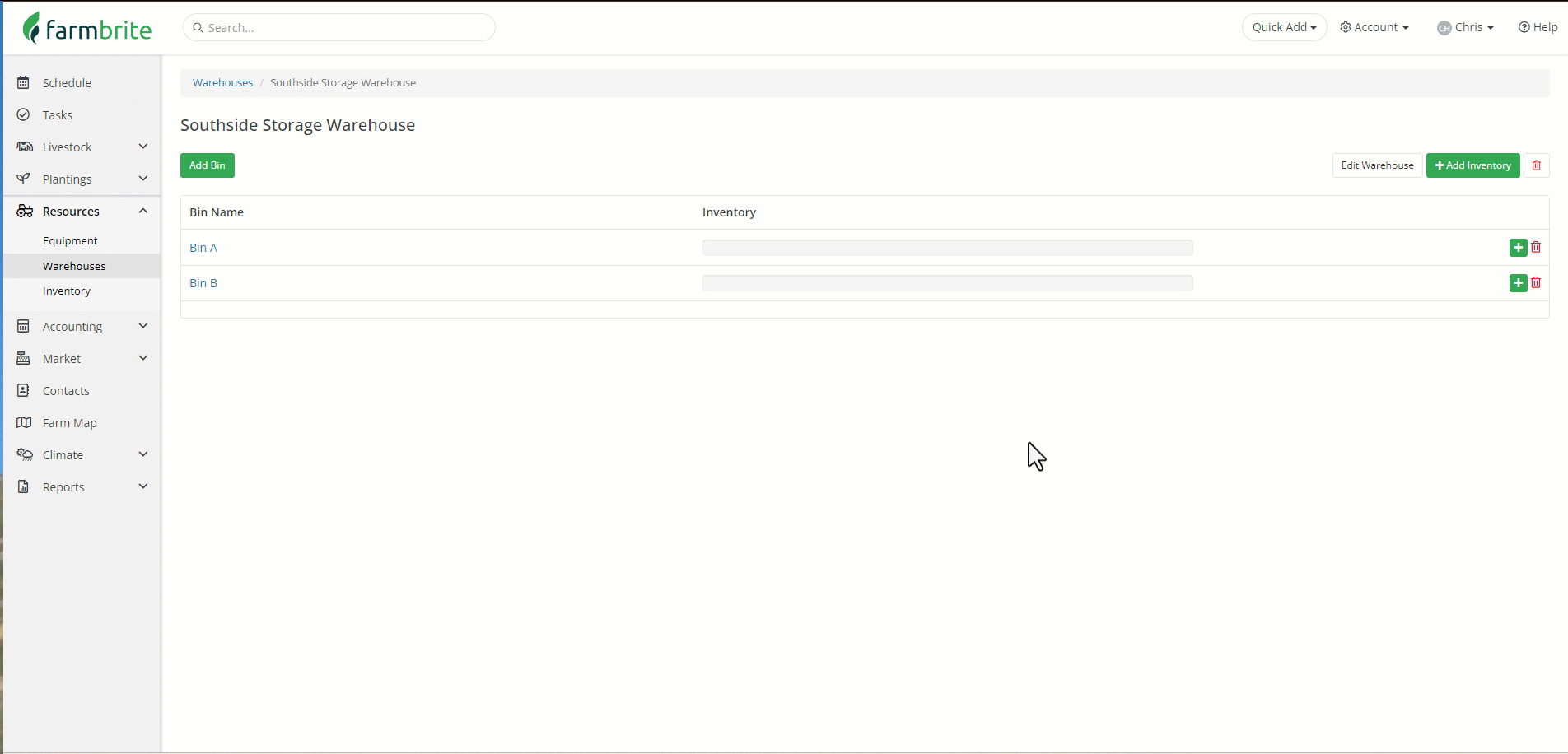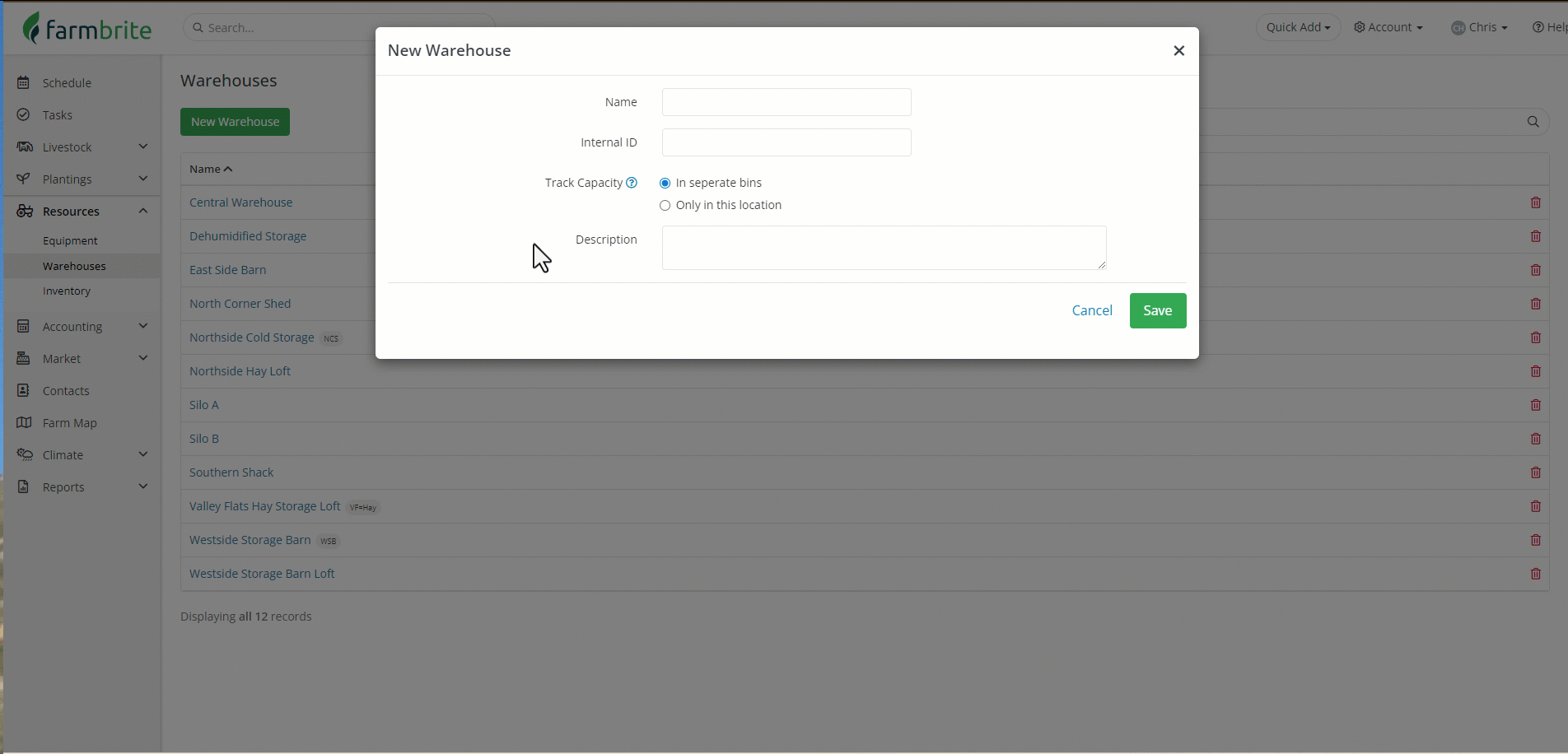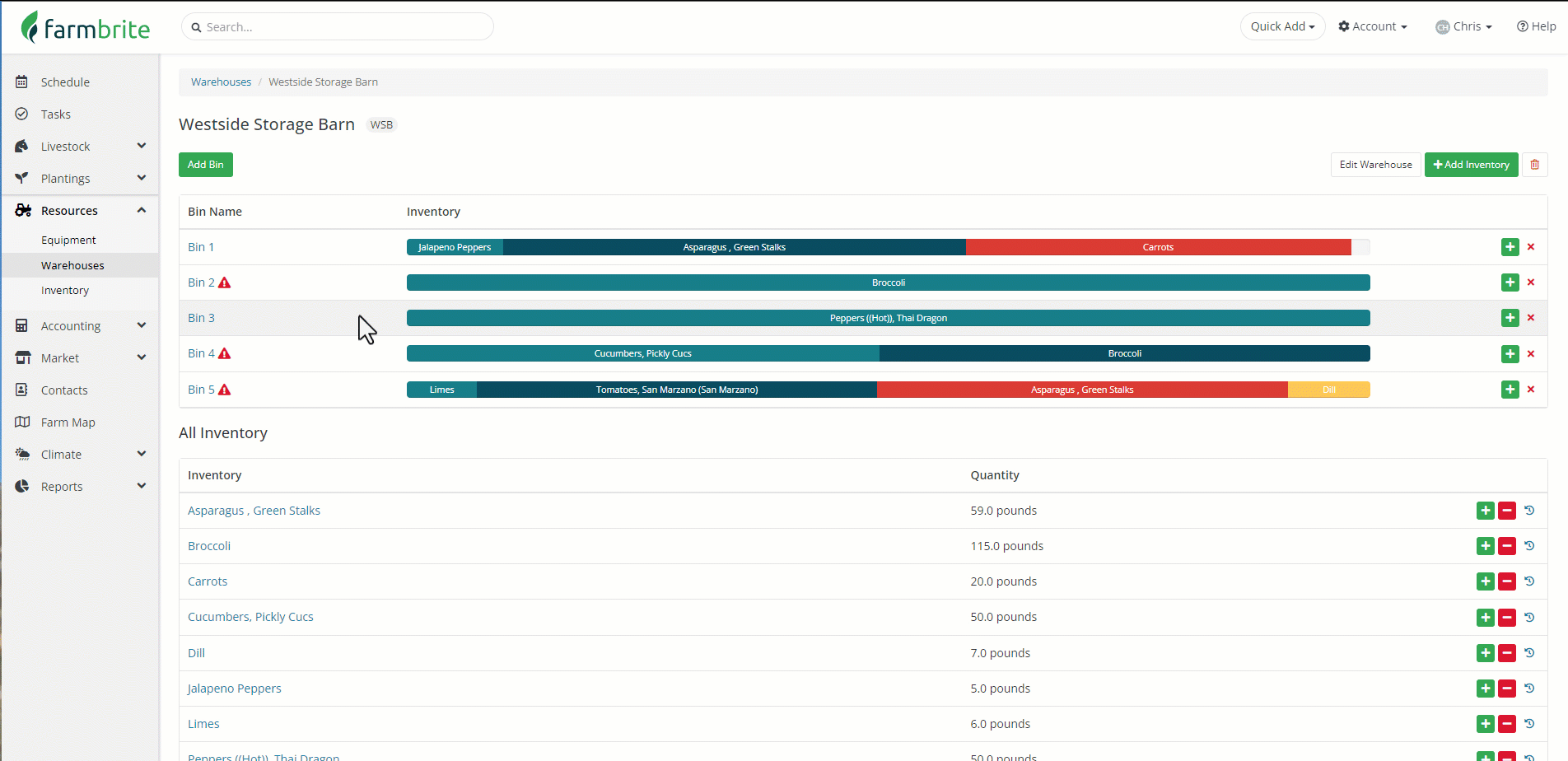Setting Up a New Warehouse
If you've checked out our Getting Started with Resources article, you know that a warehouse is a place where you store your inventory items. This might be shed, barn, silo, tank, refrigerated storage, closet within a building, or even a storage facility off your property like a grain elevator. Warehouses can also be optionally subdivided into bins, which allow you to be more granular with your inventory storage. You might keep your fertilizer in your barn, but knowing what section of the barn it's in may help you - and your farm workers - find it faster. You'll be able to track the capacity of the warehouse and bins as well.
To create a new warehouse, navigate to Resources in your left menu, and then select Warehouses. From the main Warehouse page, click the button for New Warehouse. You'll need to give your warehouse a name, an optional internal ID, and then you will choose how to track capacity.

If you choose to track capacity in separate bins, you'll be able to create subsections of this warehouse to store inventory items. This is great for things like cabinets and shelves, or could be used for areas and sections of the warehouse like the loft or backroom. Each indivdiual bin can have its own capacity. In the example below we added 2 bins to our Southside Storage Warehouse. Bin A has a capacity of 50 lbs, and we filled it with carrots. Bin B had a capacity of 75 pounds and we partially filled it with jalapeno peppers.

If you choose to track capacity only in this location, the entire warehouse has a single capacity. This would be useful for something like a silo, tank, or hay storage barn. See in the example below that we added a 4500 pound capacity to our cattle feed silo, and that a capacity gauge is shown across the top of the warehouse homepage to indicate how much of that capacity has been used.

Be aware that you can add items beyond the max capacity of a bin or warehouse. If you do this, you might not see all of the items in the bin shown in the percentage bar. An "!" icon will be displayed alerting you to this. If you need to increase the max capacity, just select the bin or warehouse and add a larger amount. Below you'll see that we actually fit more pounds of broccoli than expected in bin 2, so we increased the maximum to give us a better visual representation of it's capacity.

Now that you have created your warehouses and optionally set up your capacity, you can now get started with adding inventory items. You'll be able to add those items to these locations once you have them set up.
Warehouse History
You'll also see a tab for Warehouse history when you access your warehouse. This is a running log of what was added, removed, and adjusted from your warehouse. This history contains the reason and source for the inventory change as well, making it easy to see why these items were added or removed from your warehouse. Beyond that, you'll find a Location History Report that shows these logs for all of your warehouses as well. Note: you can find a similar history for each inventory item under it's record as well.

Mapping Your Warehouse
Your warehouse is likely a physical location on your farm, and you'll be able to connect it with your farm map. You can start from the warehouse or map, either way allows you to make the connection. In our image below we've mapped it from the warehouse record. Just select your warehouse, choose the Map tab, and draw your Storage Location. It will be saved and presented each time you access this tab, or the main Farm Map. This might help your farmhands and delivery workers find their way around a large property or complicated multi-location business.

A note about our examples in this article - The Farmbrite Warehouse and Bin system is designed to be highly customizable. You can use these however you see fit to meet your needs. How you use these two levels of inventory tracking is up to you!
Reach out to our customer support if you have any questions about creating warehouses and bins!